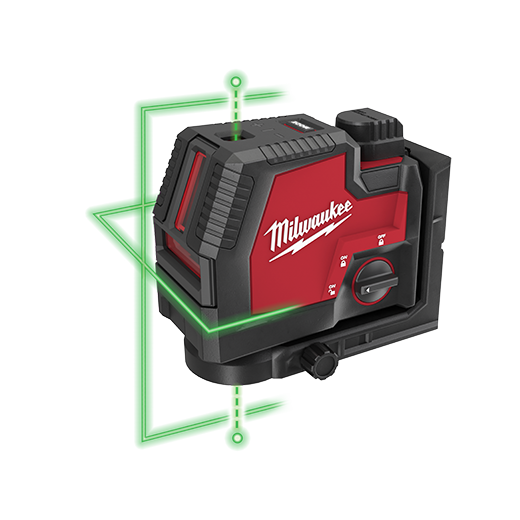Loading ...

2
GENERAL POWER
TOOL SAFETY
WARNINGS
WARNING
Read and understand all instruc-
tions. Failure to follow all instructions
listed below, may result in electric shock, re and/or
serious personal injury. Save all warnings and in-
structions for future reference.
• Save these instructions - This operator's manual
contains important safety and operating instructions.
LASER SAFETY
WARNING
The device produces visible laser
beams, which are emitted from the
tool.
• This device complies with 21 CFR 1040.10 and
1040.11 except for conformance with IEC 60825-1
Ed. 3., as described in Laser Notice No. 56, dated
May 8, 2019.
•Laser light - Do not stare into beam or view
directly with optical instruments. Do not point
laser light at others. Laser light can cause eye
damage.
WORK AREA SAFETY
• Ensure adequate safeguards at the work site
(e.g. surveying site when measuring on roads,
construction sites, etc.).
• Avoid dangerous environments. Avoid extended
exposure to rain, snow, damp or wet locations. Do
not use in the presence of explosive atmospheres
(gaseous fumes, dust or ammable materials).
PERSONAL SAFETY
• Do not allow persons unfamiliar with the tool,
these safety instructions, and the tool's opera-
tor's manual to operate the tool. This tool can be
dangerous in the hands of untrained users.
• Do not overreach. Keep proper footing and
balance at all times. This enables better control
of the tool in unexpected situations.
BATTERY USE
AND CARE
• USE AND CHARGE ONLY REDLITHIUM
®
USB BAT-
TERIES IN THIS USB RECHARGEABLE TOOL.
OTHER TYPES OF BATTERIES MAY CAUSE PER
-
SONAL INJURY AND DAMAGE.
• BEFORE USING THE BATTERY AND TOOL, READ
THIS OPERATOR’S MANUAL AND ALL LABELS ON
THE BATTERY AND TOOL.
• USE ONLY WITH LISTED/CERTIFIED ITE POWER
SUPPLY. Others may result in a risk of re, electric shock
or personal injury.
• CHARGE IN A WELL VENTILATED AREA. Do not
block charger vents. Keep them clear to allow proper
ventilation. Do not allow smoking or open ames near a
charging battery. Vented gases may explode.
• MAINTAIN CORD. When unplugging charger, pull plug
rather than cord to reduce the risk of damage to the
electrical plug and cord. Never carry charger by its cord.
Keep cord from heat, oil and sharp edges. Make sure
cord will not be stepped on, tripped over or subjected to
damage or stress. Do not use charger with damaged cord
or plug. Have a damaged charger replaced immediately.
• USE ONLY RECOMMENDED ATTACHMENTS. Use of
an attachment not recommended or sold by the battery
charger or battery manufacturer may result in a risk of
re, electric shock or personal injury.
• TO REDUCE THE RISK OF ELECTRIC SHOCK, always
unplug charger before cleaning or maintenance.
• DO NOT BURN OR INCINERATE BATTERY PACKS.
Battery may explode, causing personal injury or damage.
Toxic fumes and materials are created when battery
are burned.
• DO NOT CRUSH, DROP, OR DAMAGE battery. Do
not use a battery or charger that has received a sharp
blow, been dropped, run over, or damaged in any way
(e.g., pierced with a nail, hit with a hammer, stepped on).
• DO NOT DISASSEMBLE. Incorrect reassembly may
result in the risk of electric shock, re or exposure to bat
-
tery chemicals. If it is damaged, take it to a MILWAUKEE
service facility.
• BATTERY CHEMICALS CAUSE SERIOUS BURNS.
Never allow contact with skin, eyes, or mouth. If a dam
-
aged battery leaks battery chemicals, use rubber or
neoprene gloves to dispose of it. If skin is exposed to
battery uids, wash with soap and water and rinse with
vinegar. If eyes are exposed to battery chemicals, imme
-
diately ush with water for 20 minutes and seek medical
attention. Remove and dispose of contaminated clothing.
• DO NOT SHORT CIRCUIT. A battery pack will short
circuit if a metal object makes a connection between
the positive and negative contacts on the battery pack.
Do not place a battery pack near anything that may
cause a short circuit, such as coins, keys or nails in
your pocket. Do not allow uids to ow into battery
pack. Corrosive or conductive uids, such as seawater,
certain industrial chemicals, and bleach or bleach con
-
taining products, etc., can cause a short circuit. A short
circuited battery pack may cause re, personal injury,
and product damage.
• STORE YOUR BATTERY AND TOOL in a cool, dry
place. Do not store battery where temperatures may
exceed 120°F (50°C) such as in direct sunlight, a
vehicle or metal building during the summer.
Loading ...
Loading ...
Loading ...
